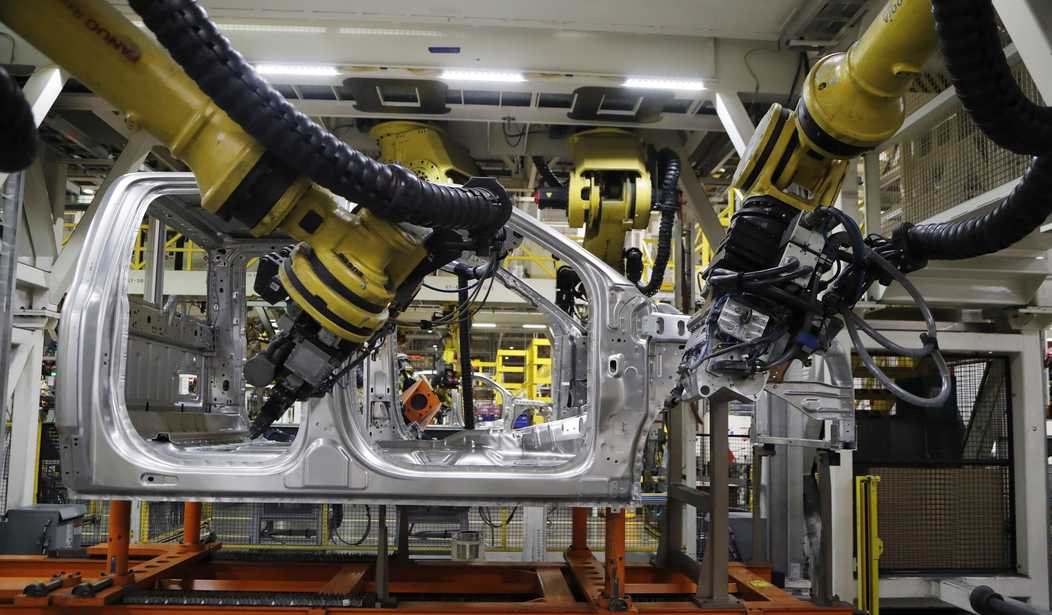Editor's Note: This column was authored by Colby Humphrey.
Pundits and policy wonks have noted the economic disparity between urban and rural America. Government data from 2019 shows 31 counties alone accounted for nearly one-third of national GDP growth. This disparity often plays into electoral politics. Remember Hillary Clinton’s infamous declaration? In 2016, Clinton said she won the “places moving forward” (i.e., coastal cities) while President Trump won the declining, rural parts of the country — the “backward” places.
But that economic disparity could shift if Republicans play their cards right.
The effects of COVID-19 on global supply chains are forcing public and private-sector leaders to rethink current manufacturing approaches. This reassessment provides Republicans a chance to pursue a rural manufacturing renaissance that could bring economic growth back to the parts of flyover country that desperately need it. Based on the 2020 election results, the GOP’s continued strength in these regions makes those communities all the more relevant.
The idea of reviving American manufacturing isn’t new. Policies and initiatives aimed at restoring the country’s manufacturing base have been in place for years. Yet the overall output and employment numbers in this area still lag behind those of previous decades.
What’s different this time is the urgency lawmakers should feel in revitalizing American manufacturing policy. While debates have raged over the costs and benefits of globalization, the current pandemic has revealed just how vulnerable the U.S. is to global disruptions. Such vulnerabilities point to American manufacturing policy failures that have left the country in a perilous position through much of 2020.
By pushing for rural manufacturing growth, Republicans could serve their constituents, bolstering the country’s security, and protect them from future shocks to the global supply chain. Rural America has been on the decline for decades: dwindling job prospects and stagnating wage growth has defined the scene. As manufacturers seek to boost domestic production, these regions are primed to reap the benefits.
Recommended
To accomplish this, policymakers should focus on lifting the regulatory barriers in the way of a rural manufacturing boom. As noted by Mark Partridge with AEI, location-based policies, including “legal and regulatory constraints that reduce labor market flexibility such as onerous state occupational licenses and noncompete legal agreements,” are a particular problem. Reducing such barriers could propel the rural economy forward. A significant level of deregulation has already occurred throughout the pandemic, and policymakers should lean into these trends to boost rural manufacturing.
Federal policy could also be enacted in the 2021 congressional session. The pandemic has pushed many to call for a new manufacturing strategy. Republicans in Washington would be fools to neglect legislative action that benefits rural America. With Democrats retaining control of the House of Representatives, they are likely to chase “historic investments” in a host of areas, including advanced manufacturing. The GOP could leverage this preference and collaborate on a combination of direct investments and regulatory reforms in 2021 to boost the rural economy. While many on the right may be hesitant, this strategy may be worth pursuing as the projected minority party. Looming Senate elections in 2022 make such policies advantageous for Republicans in the upper chamber as well. Tying the need for manufacturing security to economic growth in rural America is a tailor-made strategy for the emerging Republican coalition.
While the U.S. continues to deal with the effects of COVID-19, the pandemic offers an opportunity to reevaluate America’s manufacturing priorities. The shortcomings of the rural economy in America won’t go away overnight. However, advancing American manufacturing by investing in declining counties could be the right place to start. As the GOP strengthens its rural base of support, policies that bolster manufacturing in rural areas could improve those residents’ lives and address the country’s manufacturing deficiencies moving forward.
Colby Humphrey is the Chief Intelligence Officer for Make Safe Tech, Inc., and a Young Voices contributor.



















Join the conversation as a VIP Member